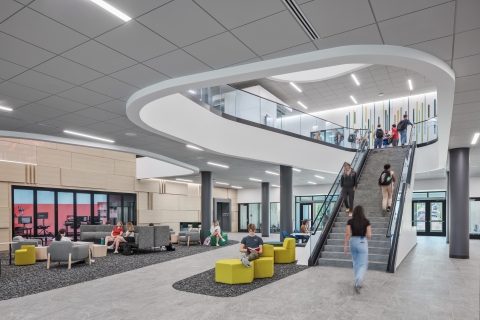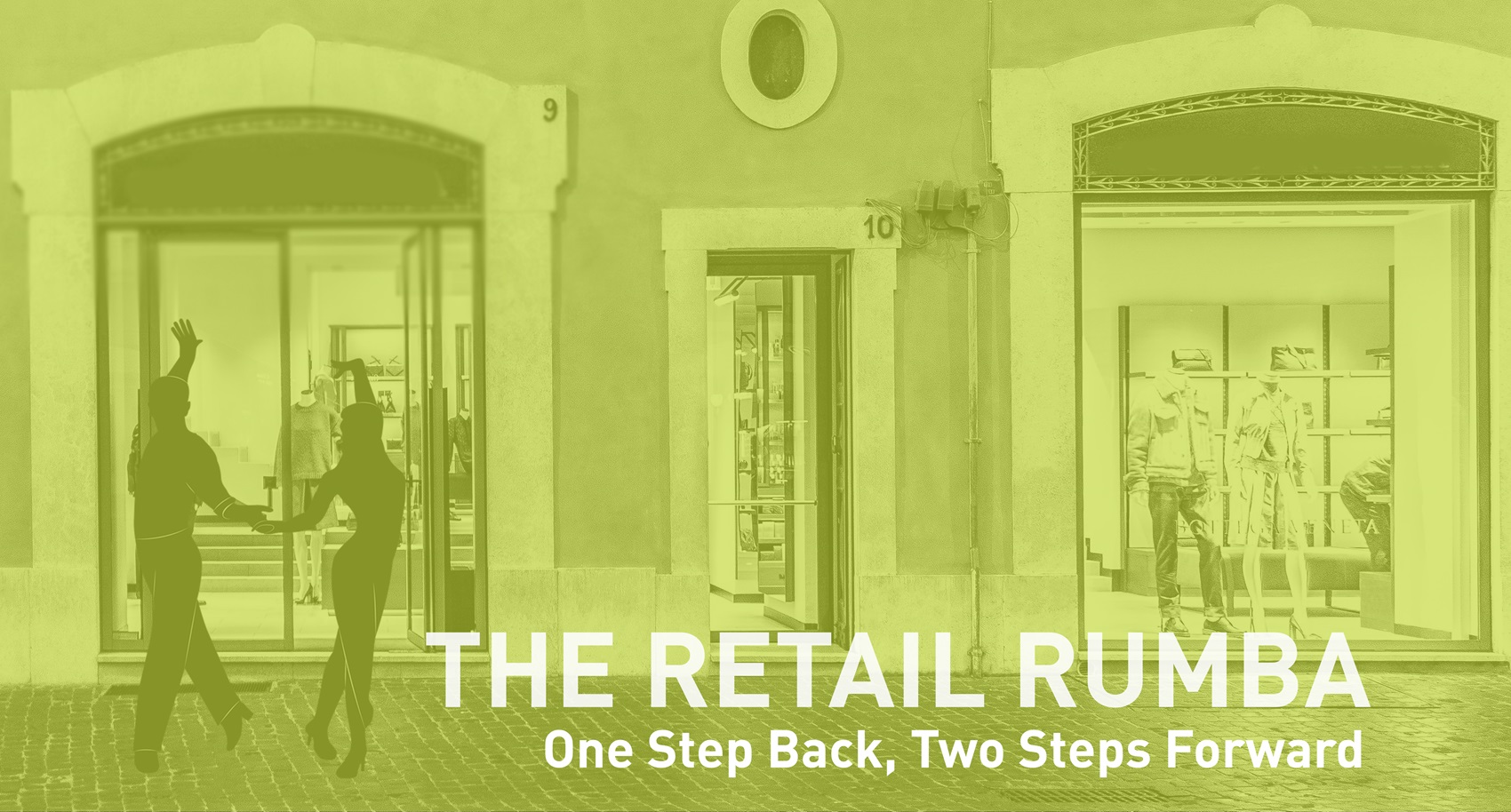
The Retail Rumba – One Step Back, Two Steps Forward Part II of III

The Retail Rumba – One Step Back, Two Steps Forward Part II of III
by Declan McCormack
While 2020 was a step back, 2021 is the time to prepare for two steps forward.
In BHDP’s previous installment of “The Retail Rumba,” we looked in our rear-view mirror at historical events that forced retail to reinvent and adapt to learn how the industry can rebound after the COVID-19 Pandemic. We were caught by surprise and unprepared as an industry. The outset of 2020 looked promising for much of the retail category, further catching retailers off guard once the pandemic hit. With the onset of and prolonged effects of the pandemic, the rigidity of our formats, lack of alternate shopping channels, and inadequate distribution engines caused retail to hit a roadblock.
However, with vaccine rollouts underway and recent reports that infection rates are on a downward curve, we can finally see light at the end of the tunnel. This beacon signals that now it is time to plan for long-term solutions and take steps toward implementing the learnings from what we now know.
What Shopper Data Tells Us
We know that a new level of shopper anxiety exists, but our research tells us that shoppers want to return to stores. Based on BHDP’s nationwide shopper surveys conducted by an independent market research firm, our data indicates that shoppers enjoy and prefer the experience of shopping in-store. They want to return to brick-and-mortar retail, because they are looking to engage with their brands of choice and experience the thrill of the hunt, the personal service, and even the entertainment factor that in-store shopping offers.
Despite shoppers’ desire to return to the store, retailers have work to do to get shoppers back in store in this competitive landscape. Here are some of the facts and what we are hearing directly from shoppers through our research:
- Nearly 40% expect that shopping in the store will be their first choice when COVID is over; at the same time, 26.8% have no preference. Therefore, creating in-store experiences beyond purchasing products is crucial to get them back in the store.
- 41.9% prefer to shop in physical stores because it is fun.
- 52% are willing to travel up to 30 minutes to shop a brand in-store rather than online, with nearly 30% willing to travel more than 30 minutes.
- 26.9% said the design/atmosphere of the store would influence whether they return, and 44.7% reference customer service as a factor.
- 61.5% said they will not have any concerns shopping in-store after the pandemic.
We know there will be pent up demand, but if we do not relieve some of the anxieties that shoppers have felt and will continue to feel in the coming months, we will miss the mark. Ignoring shopper behavioral data is no longer an option. Those retailers who take two steps forward, a leap if you will, will win. Those who react by staying the course—and taking only that one step forward to return to operations pre-pandemic—will struggle and potentially lose market share, and perhaps even fail.
What do we do?
Step 1: We must bolster our omni-channel engines, give shoppers access to omni-choice that they are seeking, and immediately find better solutions for BOPIS and BOPAC.
Step 2: Bring shoppers back in-store safely. According to a recent Harvard Business Review, it takes 66 days for humans to form a habit. Over the course of the pandemic, we have all had ample time to form new habits, particularly as it relates to our pathways to purchase products. We have seen online sales skyrocket and thankfully that has kept our industry’s heart beating by offsetting the significant drop in in-store sales. With that, the pandemic year could have been a lot worse for retail, eventually closing with big lifts in shopper spend over the extended holiday season.
But can we expect shoppers to drop these newly formed habits and revert to their pre-pandemic mode of shopping? It would be a missed opportunity to continue ignoring these new habits, because for some shoppers, they may likely become permanent.
The First Step Forward: “At Store”
BOPIS, BOPAC, Drive-Thru, Pick-up Window, etc., are the low hanging fruit for future improvements to the shopper experience. The restaurant and banking sectors figured out the drive-thru and pick-up experiences decades ago. But mainstream retail has been reacting and struggling over the last several months to provide a similar pick-up at store experience. Some retailers are doing this well by investing in the experience, but many are applying a temporary band-aid. Relying on hastily positioned plastic buckets filled with concrete to support signposts devoid of any real branding is hardly a solution for a service that is here to stay.
We need to:
- Significantly improve the “at store” experience by extending the brand expression to embrace those critically important “at store” moments.
- Bring the in-store experience out to the shopper at curbside.
- Look at this as an opportunity to further engage shoppers, not as a temporary fix.
Creating a branded experience at the curb is not a difficult challenge for designers. But it presents significant capital spend challenges for retailers—how will they pay for this out-of-store expression of the brand? We know that “at-store” will be here for some time and in many cases permanently. Retailers need to evaluate their capital allocation budgets and creatively reallocate capital not just based on initial investment but on the longer-term benefits of delivering on the brand promise and delivering a true omni-choice experience for shoppers.
The Second Step Forward: In Store
Join us in the coming weeks for our final instalment of “The Retail Rumba” when we talk about relieving shopper anxiety and creating safe in-store experiences.

